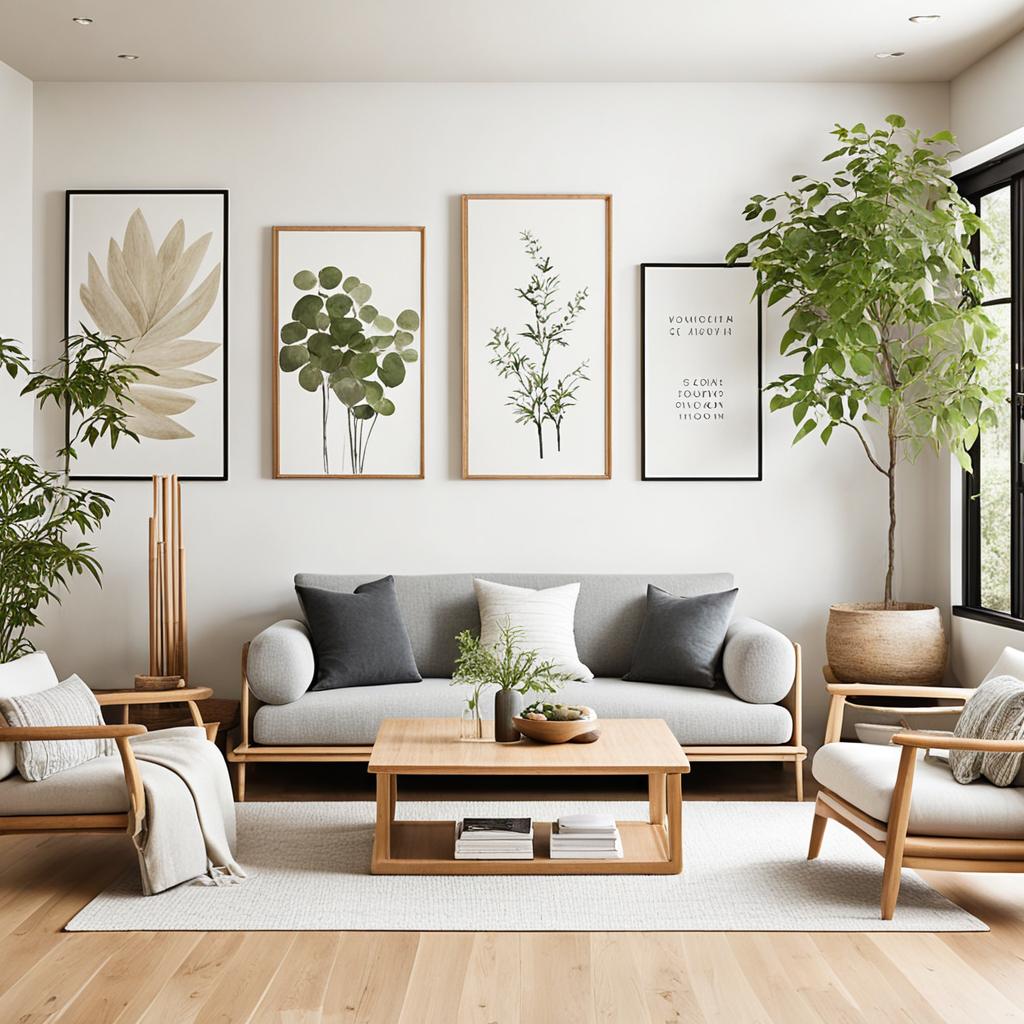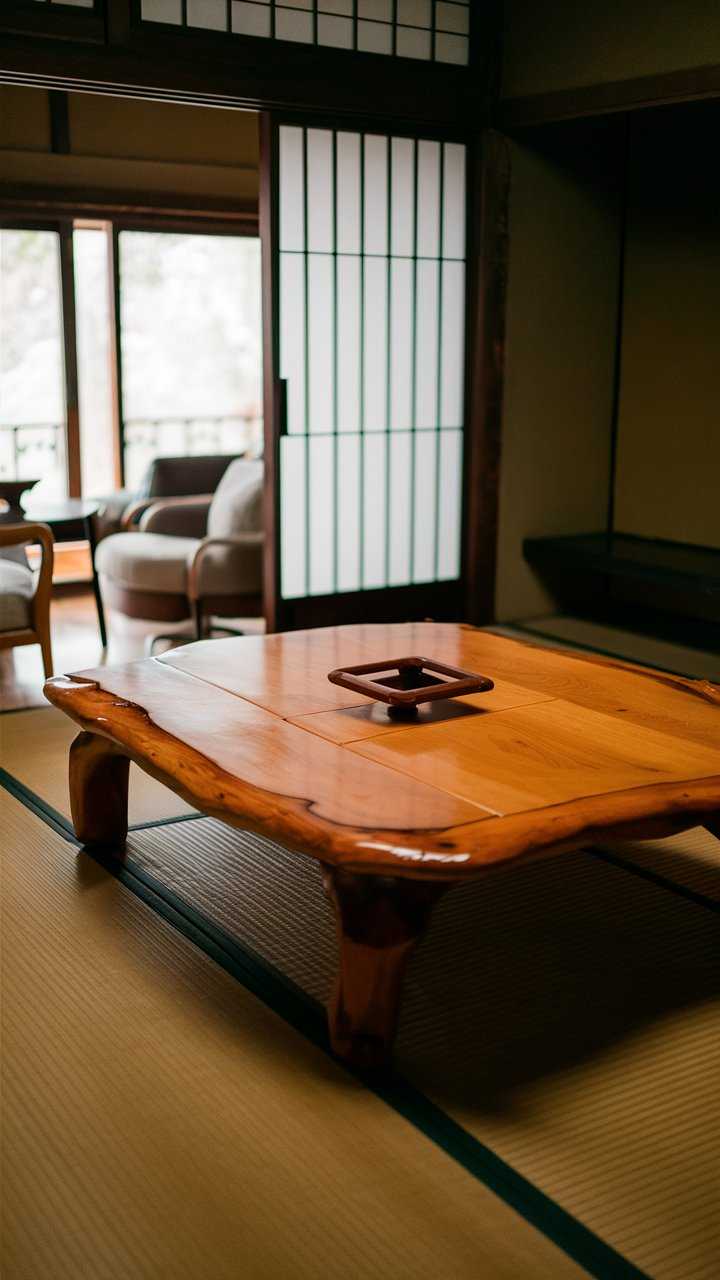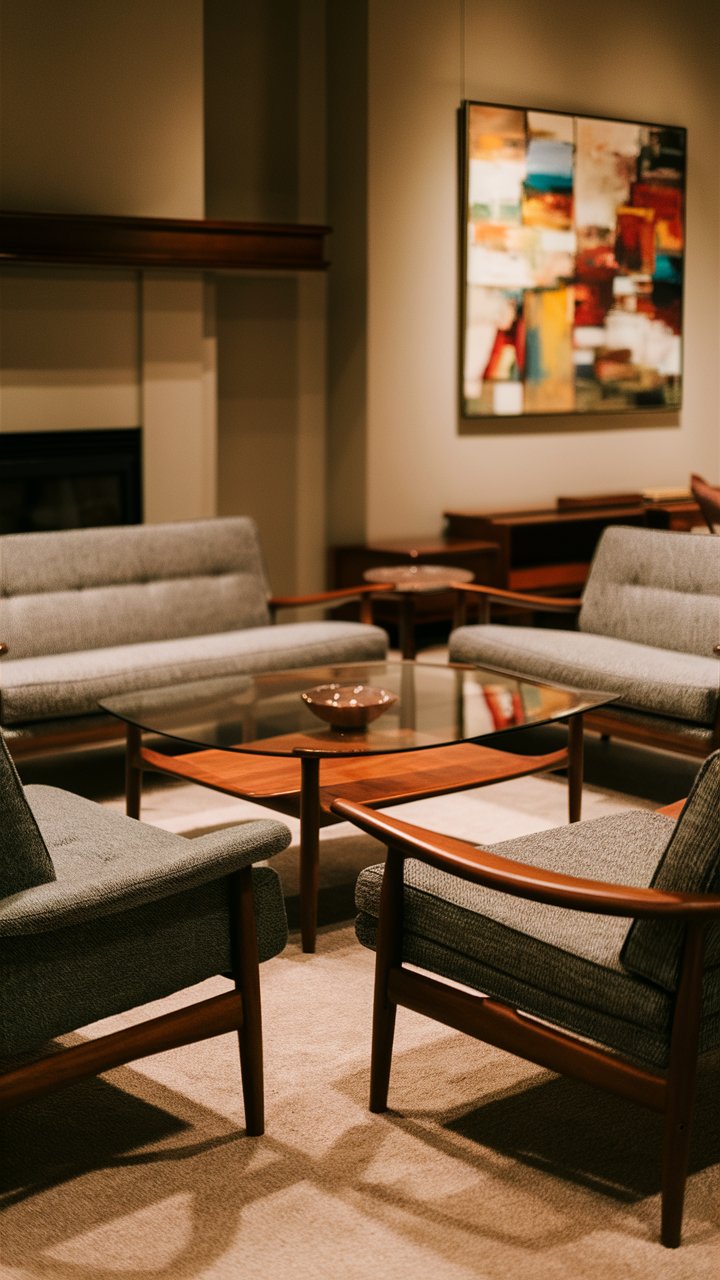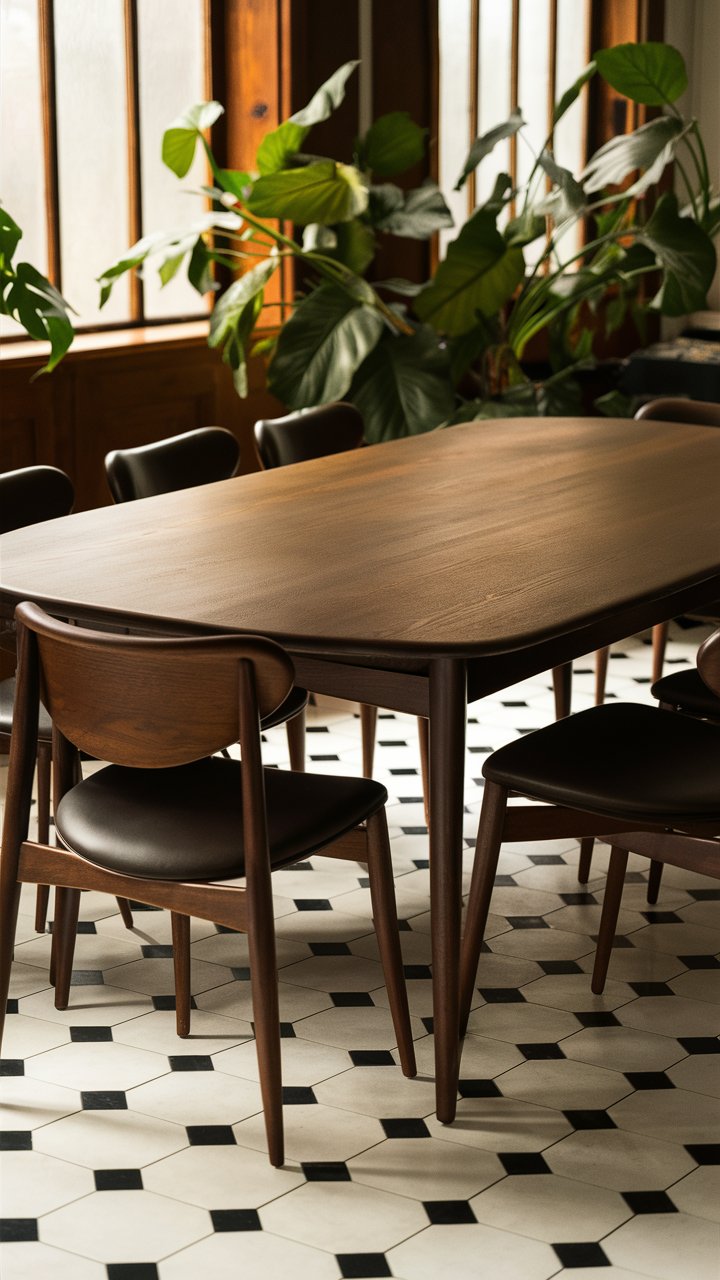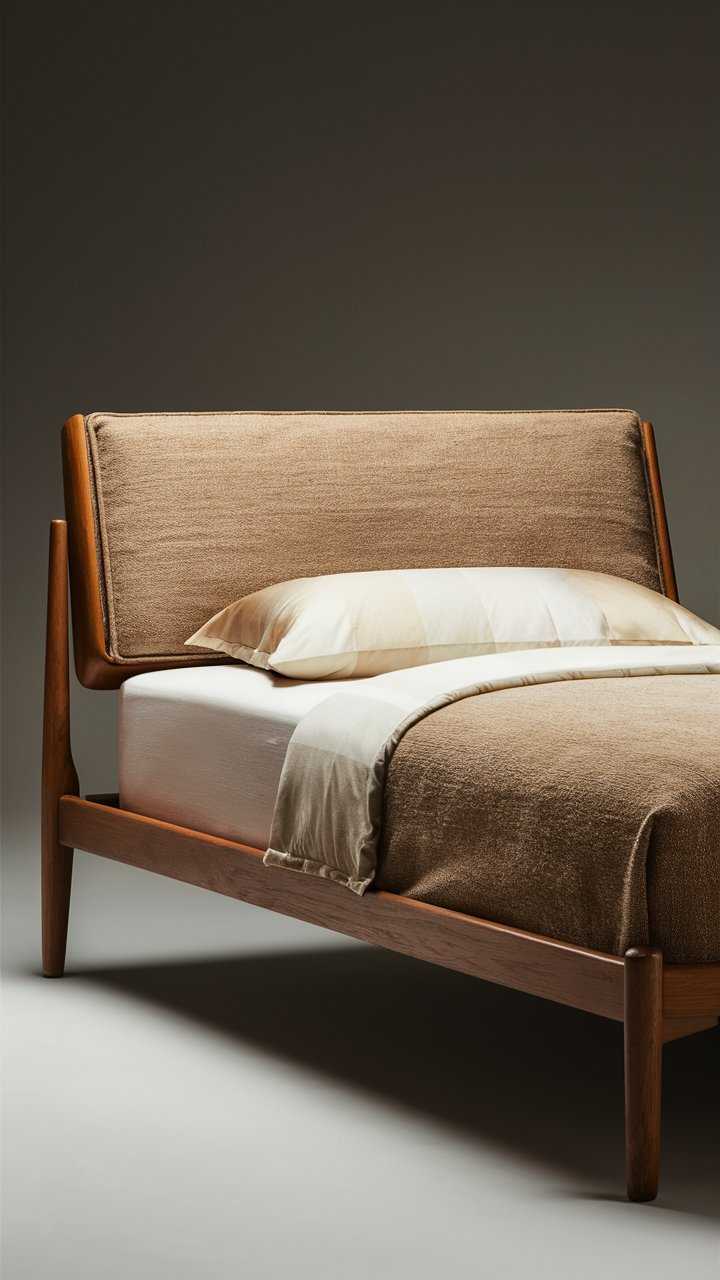Japandi Living Room: Zen Meets Scandinavian Style
The Japandi style mixes Japanese and Scandinavian design. It’s becoming popular in modern homes. This mix creates a calm, useful, and nature-connected living space. Japandi combines the Japanese wabi-sabi idea of loving imperfections with Scandinavian clean lines and natural materials. This makes the living room peaceful and visually stunning.
Key Takeaways
- Japandi style blends the minimalist Scandinavian aesthetic with the wabi-sabi philosophy of Japanese design
- Japandi living rooms feature natural materials, earthy color palettes, and a focus on functional simplicity
- Sustainable furnishings and a connection to nature are hallmarks of the Japandi design approach
- Japandi spaces emphasize clean lines, organic textures, and a warm, inviting atmosphere
- The Japandi living room showcases a dedication to craftsmanship and a zen-inspired ambiance
What is Japandi Style?
Japandi style mixes Japanese and Scandinavian design. It creates a peaceful living space that combines the best of both. This style uses Scandinavian minimalism and Japanese wabi-sabi philosophy. It also includes natural materials.
Fusion of Japanese and Scandinavian Aesthetics
Japandi style loves simplicity and clean lines. It connects us to nature. Inspired by Japanese wabi-sabi, it uses materials like wood and rattan. This creates a warm, natural feel.
Scandinavian design adds minimal furniture and natural light. This makes spaces open and bright.
Minimalism with a Warm, Earthy Vibe
Japandi style is not just about minimalism. It uses soft colors and natural textures for a cozy feel. Shades of gray, brown, and pastel mimic nature’s colors. This makes spaces calm and meaningful.
“The Japandi style emphasizes simplicity, clean lines, and a connection to nature, resulting in a living space that is both serene and inviting.”
Japandi Interior Design Principles
At the core of Japandi design are two key ideas: wabi-sabi and hygge. These come from Japanese and Scandinavian traditions. They blend to make interior design meaningful and peaceful.
Wabi-Sabi: Embracing Imperfections
Wabi-sabi is a Japanese philosophy that sees beauty in imperfections. It values unfinished materials and craftsmanship. Japandi uses this idea to celebrate the unique look of each piece.
Hygge: Cozy Contentment
Hygge is a Danish idea that focuses on warmth and coziness. Japandi uses soft textures and simple decor to make spaces feel welcoming and relaxing.
The mix of wabi-sabi and hygge shapes Japandi design. It leads to spaces that are simple yet full of meaning. These spaces bring peace and balance.
“Japandi design is about finding beauty in the imperfect and creating a cozy, zen-inspired haven.”
Natural Materials and Sustainable Furnishings
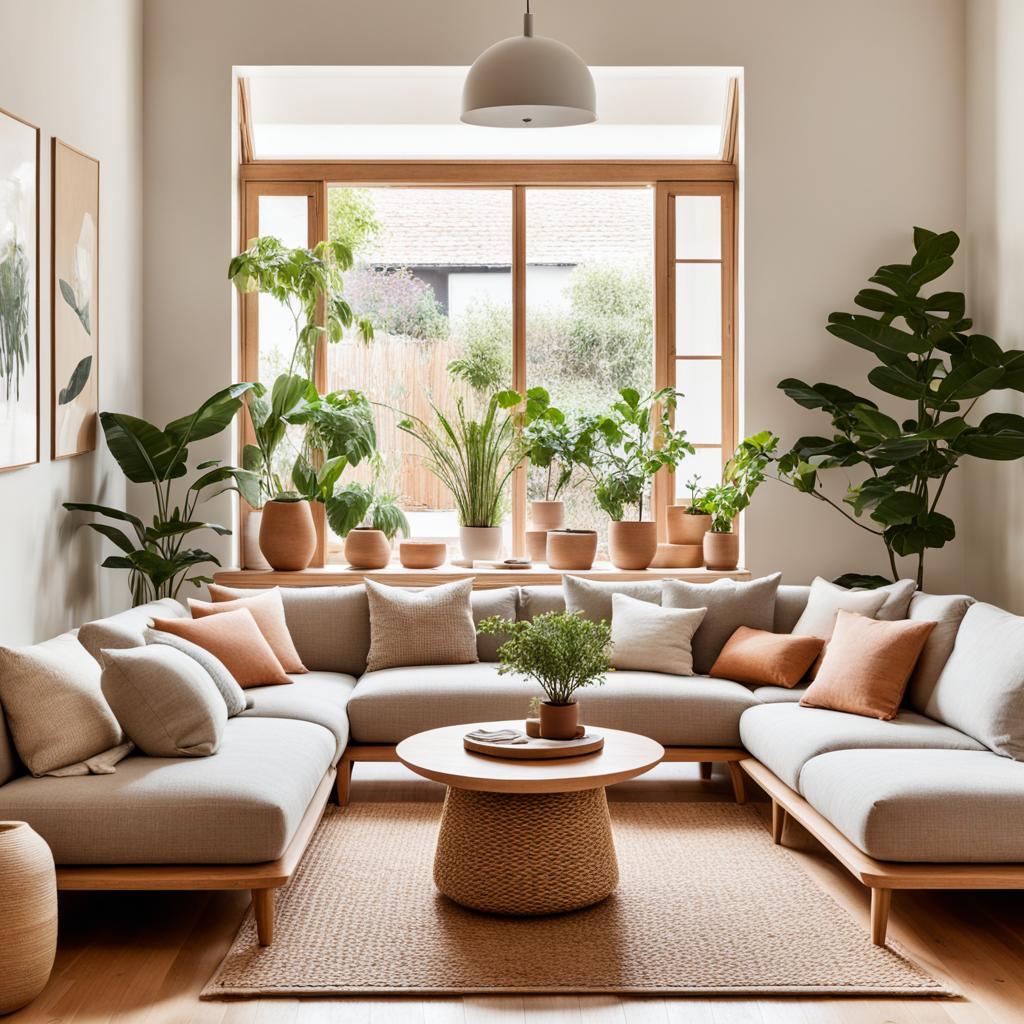
Sustainability is key in Japandi design. It uses natural materials and eco-friendly furnishings. These include wood, rattan, wicker, bamboo, and fabrics like linen and cotton. They add to the warm, earthy aesthetic and support a sustainable approach.
Japandi focuses on durable, artisanal pieces. This means the furniture lasts a long time. It’s a timeless and sustainable solution for modern homes. Choosing Japandi means picking quality and caring for the planet.
“Japandi design celebrates the inherent beauty of natural materials, creating a harmonious and sustainable living environment.”
Japandi uses organic textures like rattan and bamboo. It also values the durability of solid wood. This makes the furnishings last longer. It fits with the Japandi idea of wabi-sabi (accepting imperfections). This way, you reduce waste and live more sustainably.
Choosing Japandi means getting a timeless and eco-friendly look for your home. It’s about using natural materials and sustainable furnishings. This way, your home looks great and matches your values.
Color Palette: Neutral Tones and Earthy Hues
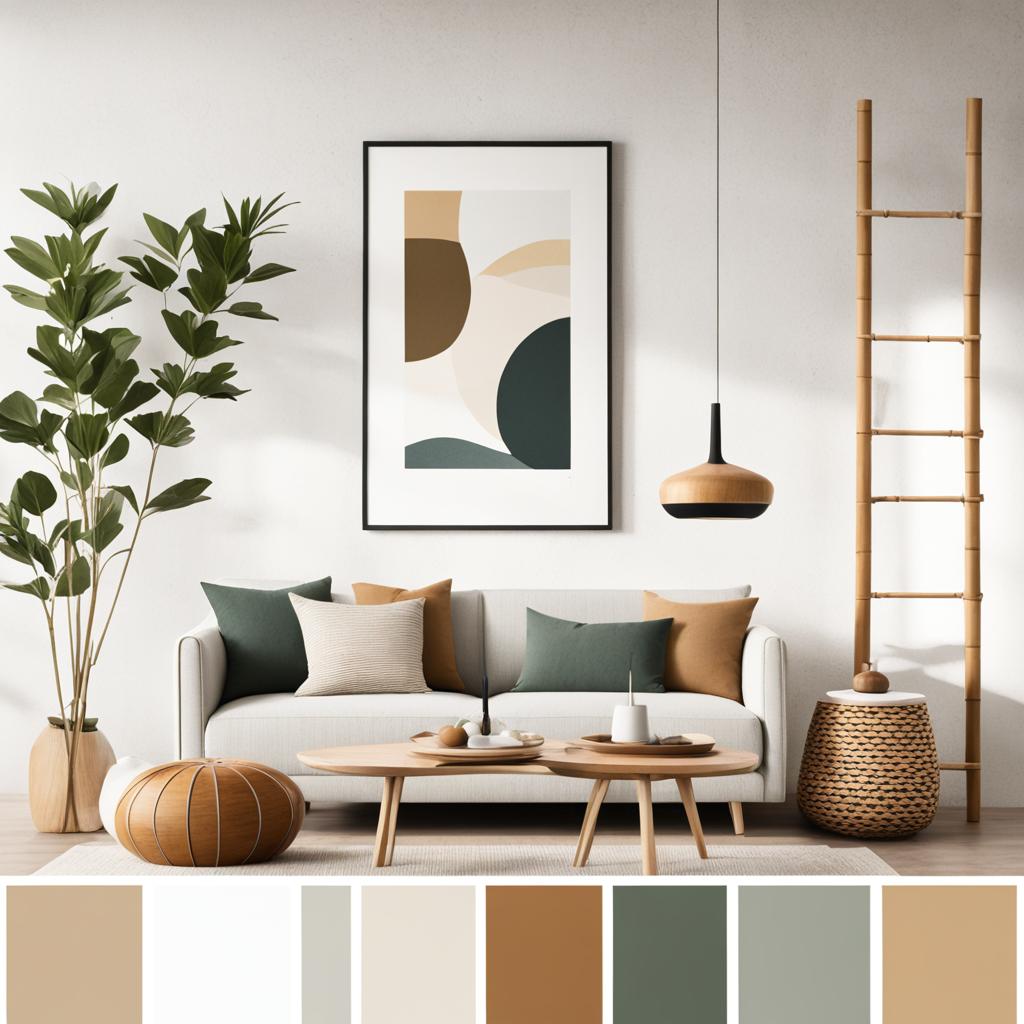
The Japandi color palette combines soft grays, warm browns, and muted pastels. It’s inspired by nature. This mix creates a calming, nature-like feel in the living room. It reflects the peaceful scenes of Scandinavian and Japanese design, adding to the room’s tranquility.
Grays, Browns, and Pastels
Key colors in the Japandi palette include:
- Soft, muted grays that evoke the tranquility of a cloudy day
- Rich, earthy browns that bring the warmth of natural wood tones
- Subtle pastel shades, like dusty pinks and sage greens, that add a touch of softness
Layered to Mimic Natural Landscapes
These colors are layered to create a calming atmosphere. They mimic the peaceful landscapes of Japan and Scandinavia. This palette brings balance and harmony to the living space.
By blending these colors, the space becomes soothing and meditative. It invites people to relax and feel connected to nature.
“The Japandi color palette is a harmonious blend of neutral tones and earthy hues, drawing inspiration from the natural world.”
Japandi Living Room: Open Concept and Functional Beauty
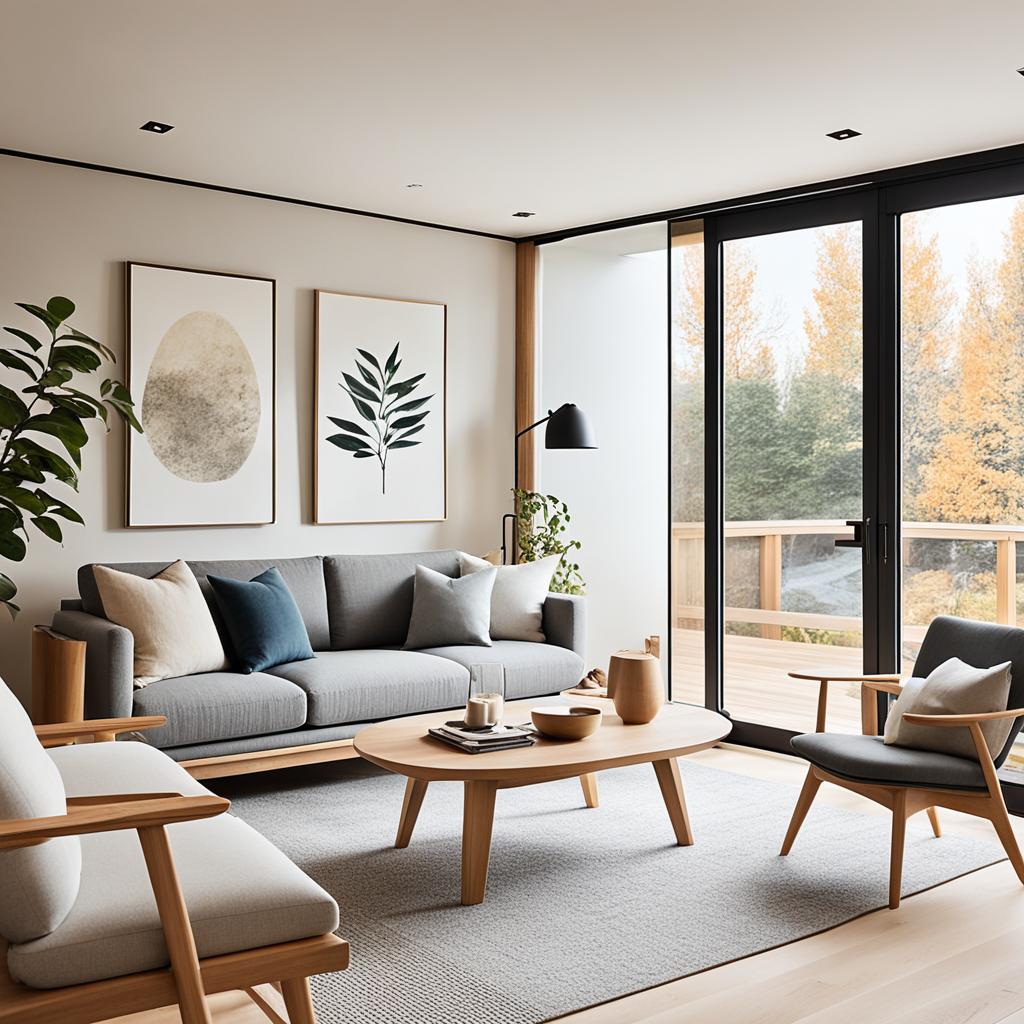
The Japandi living room combines open design with functional beauty. It’s made to help you relax, socialize, and feel calm. The layout connects the living area with the dining or kitchen, making it easy to move around and be together.
At the core, the Japandi living room values simplicity and beauty. It uses clean lines, soft colors, and natural materials for a calm feel. Adding plants and natural light makes the space peaceful and balanced.
Japandi design is more than just a big space. It’s about making a place that looks good and works well for daily life. The furniture and pieces are chosen to fit perfectly, keeping the room tidy and useful.
| Key Features of Japandi Living Rooms | Benefits |
|---|---|
| Open, Interconnected Layout | Promotes Relaxation and Social Interaction |
| Minimalist Aesthetic | Creates a Calming, Uncluttered Atmosphere |
| Abundant Natural Light and Biophilic Elements | Enhances Sense of Tranquility and Balance |
| Functional, Multifunctional Furnishings | Optimizes Space for Everyday Living |
The Japandi living room blends open design with practical beauty. It’s a space that looks good and supports your well-being. This design approach makes a place that’s both beautiful and functional.
Furniture: Simplicity and Craftsmanship
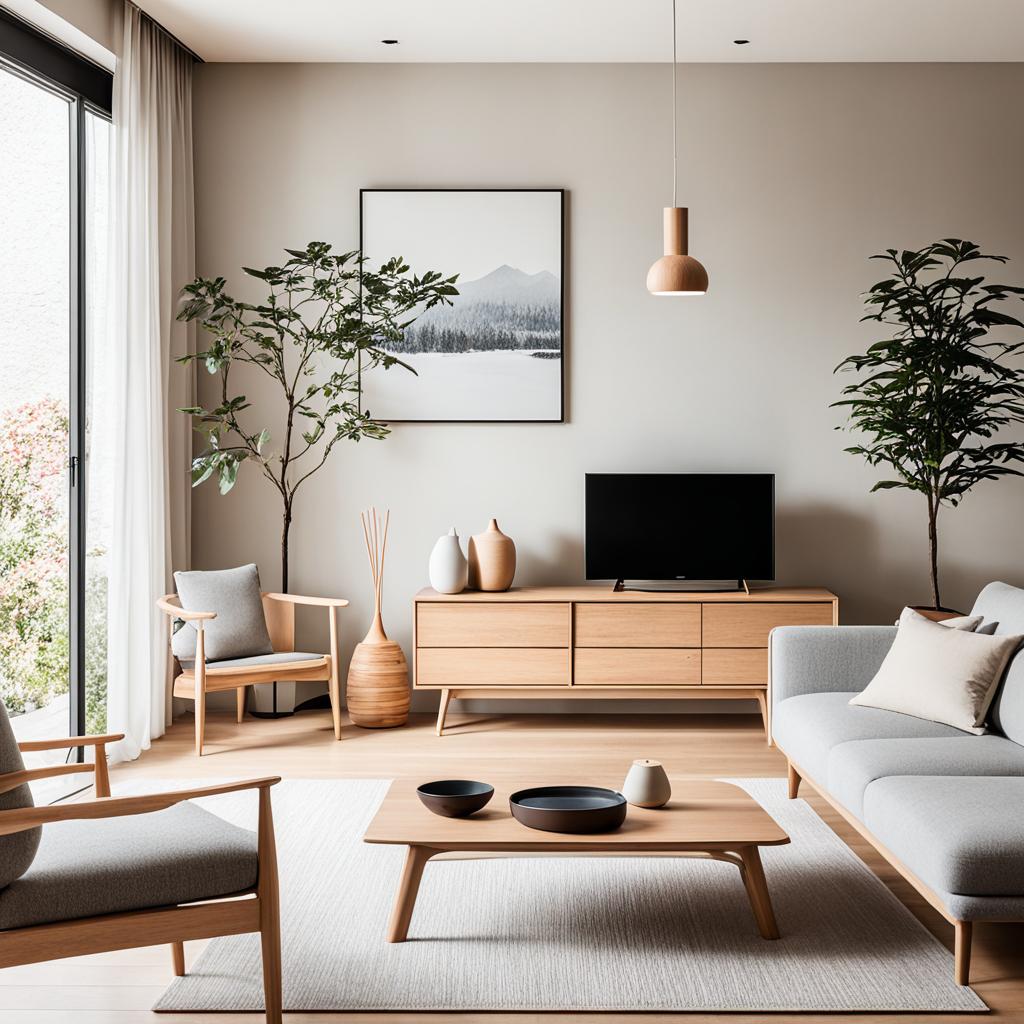
Japandi design values simplicity and craftsmanship deeply. Its furniture is made by skilled artisans. They use wood, rattan, and organic fabrics. This focus on quality makes Japandi living rooms timeless and beautiful.
Artisanal and Handmade
Japandi furniture stands out because it’s artisanal and handmade. Each piece shows the maker’s skill and care. This makes Japandi furniture unique and exclusive, perfect for those who want a refined look.
Wood, Rattan, and Organic Fabrics
Japandi furniture uses materials that match its simple and natural design. Wood, rattan, and organic fabrics give a warm, natural feel. These materials make Japandi furniture look artisanal and handmade.
| Material | Characteristics |
|---|---|
| Wood | Durable, versatile, and visually appealing; often used for furniture frames, tabletops, and accents. |
| Rattan | Lightweight, flexible, and eco-friendly; commonly used for chairs, ottomans, and decorative elements. |
| Organic Fabrics | Natural fibers like linen, cotton, and wool; provide softness and texture to upholstery and furnishings. |
Japandi furniture has clean lines and simple yet striking designs. This creates a calm, minimalist look. Japandi living rooms are sophisticated and beautiful because of their focus on simplicity and craftsmanship.
japandi living room: Minimalist Approach to Decor
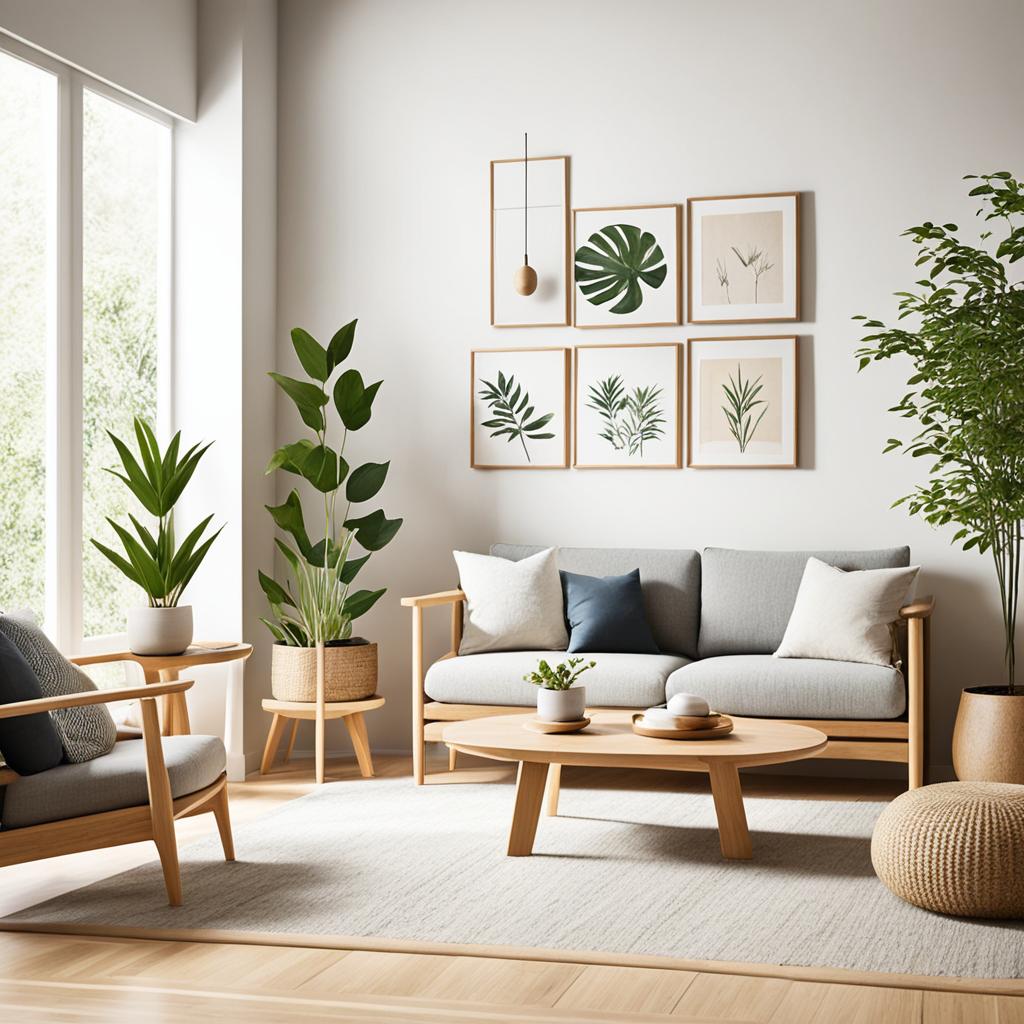
The Japandi living room takes a minimalist approach to decor. It lets the natural materials and clean lines of the furniture shine. With a focus on nature-inspired elements and abstract art, it adds to the simplicity and balance of the space.
Japandi interiors avoid too much decoration. This creates a calm, peaceful space that promotes relaxation and mindfulness. The beauty of materials like wood, rattan, and organic fabrics is highlighted. This results in a minimalist decor that feels warm and peaceful.
Nature-Inspired and Abstract Elements
In Japandi living rooms, you’ll find natural elements like plants, stones, and driftwood. These blend well with abstract art pieces. This mix of organic and minimalist forms makes for a striking yet balanced look. It shows the Japandi way of finding peace in simplicity.
- Potted plants and floral arrangements add a touch of life and greenery
- Smooth river stones or driftwood accents provide natural, textural interest
- Abstract paintings or sculptures in muted tones complement the earthy palette
A minimalist decor approach makes the japandi living room stand out. It lets the beauty of the materials and forms shine. This creates a calm and refreshing space for relaxation and thought.
Japandi Bedroom: Tranquility and Comfort
The Japandi bedroom is a place of peace and comfort. It’s made for mindful living and deep rest. It has a simple design that highlights the beauty of natural materials and clean lines. This space is free from too much decoration, making it perfect for relaxing and recharging.
Tech-Free and Texture-Rich
Japandi bedrooms focus on being tech-free. This lets people enjoy the moment without distractions. You won’t find many gadgets here, like smartphones or tablets. Instead, the room is filled with natural materials like wood, rattan, and linen textiles.
These materials add warmth and coziness to the room. The texture-rich elements create a calming feel. Smooth wood, plush rugs, and soft fabrics make the space soothing and relaxing.
“The Japandi bedroom is a sanctuary of tranquility and comfort, designed to promote mindful living and restorative rest.”
The Japandi bedroom uses minimalist design and organic materials. This creates a peaceful and comforting space. It blends Japanese and Scandinavian styles to make a room that looks good and feels restful. It’s a place to relax, recharge, and enjoy the simple things in life.
Conclusion
The Japandi design style combines Japanese and Scandinavian ideas. It makes living spaces look good and feel meaningful. Japandi uses natural materials and sustainable furniture for a calm and cozy feel. This style is based on wabi-sabi and hygge, promoting mindful living and a bond with nature.
Today, people want homes that are peaceful and useful, supporting their health. The Japandi design is becoming more popular as a lasting and flexible choice. It mixes zen-inspired living and Scandinavian minimalism for a look that values natural materials and sustainable design. This style is perfect for those wanting to make spaces that help them be mindful and feel closer to nature.
Japandi offers a new way to decorate, letting homeowners show their values and support their health. With more people looking for designs that connect with nature, Japandi is set to stay a key trend in interior design.
